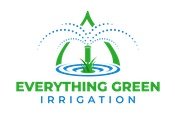How to Select the Right Type of Drainage System for Your Property
Effective drainage is essential for maintaining a healthy and beautiful landscape. However, selecting the right type of drainage system for your property can be challenging. There are several factors to consider, including the size of your property, the soil type, and the existing landscape features. In this blog post, we’ll explore some tips for selecting the right type of drainage system for your property.
Assess Your Property
The first step in selecting the right type of drainage system for your property is to assess your property. Consider the size and shape of your property, as well as any existing landscape features, such as hills or low-lying areas. A professional landscape and drainage company can provide a thorough assessment of your property and recommend the best drainage solution for your needs.
Identify Drainage Problems
Identifying drainage problems is another important step in selecting the right type of drainage system. Common drainage problems include standing water, soil erosion, and basement flooding. By identifying these problems, you can select a drainage system that is designed to address your specific needs.
Consider Soil Type
Soil type is another important factor to consider when selecting a drainage system. Sandy soil, for example, drains quickly, while clay soil drains slowly. A professional landscape and drainage company can recommend the best drainage solution for your specific soil type.
Choose the Right Drainage Solution
There are several types of drainage solutions available, including French drains, dry wells, and swales. Each drainage solution has its own unique benefits and drawbacks. French drains are a popular solution for removing excess water and preventing standing water. Dry wells can be effective at removing large volumes of water quickly. Swales are shallow depressions that direct water away from your property. Consulting with a professional landscape and drainage company can help you determine the best drainage solution for your needs.
Consider Maintenance Requirements
Another factor to consider when selecting a drainage system is the maintenance requirements. Some drainage systems require regular maintenance, such as cleaning out debris or replacing filters. Other systems are designed to be low-maintenance. Choosing a drainage system that fits your maintenance needs can help to ensure that it continues to function effectively over time.
Cost Considerations
Finally, cost considerations are an important factor when selecting a drainage system. Some drainage systems require an upfront investment, while others may have ongoing maintenance costs. Choosing a drainage system that fits your budget can help you to achieve the best results without breaking the bank.
In conclusion, selecting the right type of drainage system for your property is an important part of maintaining a healthy and beautiful landscape. Assessing your property, identifying drainage problems, considering soil type, choosing the right drainage solution, considering maintenance requirements, and cost considerations are all important factors to consider when selecting a drainage system. Consulting with a professional landscape and drainage company can help you determine the best solution for your specific needs. With the right drainage system in place, you can enjoy a healthy and beautiful outdoor space for years to come.
